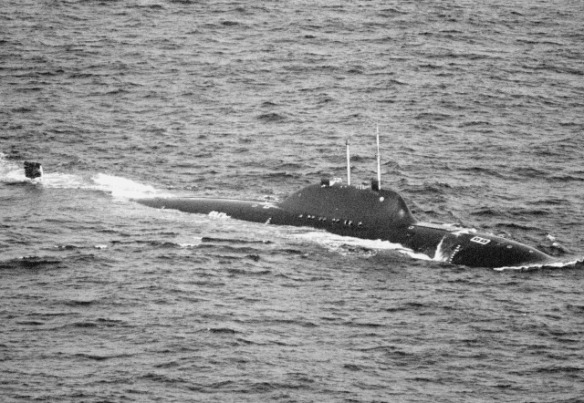The R&D and manufacturing efforts for the ALFA SSN are difficult to estimate. Two construction sites were tied up for excessively long times with this project. The first sea trials far exceeded Moscow’s expectations. Then, even with a catastrophic failure in the engineering spaces, the Soviets continued the ALFA project with tenacity unmatched by Western navies.
Better is the enemy of good enough.
This Russian proverb incorporates a philosophy that is both wise and true to the Russian heart. Those who have learned to appreciate the Russian character will agree that most Russians instinctively adhere to and follow that philosophy. To build, to create things good enough to do what they are meant to do is wise; to make them better than necessary is a waste of energy and precious resources. The proverb reportedly was inscribed on a plaque in the office of Deputy Minister of Defense and Admiral of the Fleet of the Soviet Union Sergei Gorshkov, who had guided the development of his navy since 1956.
Those of us who watched the building of the Soviet Navy from its humble beginnings as a coastal defense force after World War II to a powerful bluewater navy noticed long ago that the old proverb was true, even when it came to building submarines.
We knew that the Soviets did not follow our practice in building submarines; they did not incorporate edge-of-technology items in series-production models. And we saw Soviets building double-hull submarines long after we had discovered that the modern single-hull design had many advantages over the double hull, among them an improved speed/horsepower ratio. While the US Navy leaped decades ahead in submarine design, the Soviets plodded along by improving tried technologies. Our submarines not only looked better, they were better.
Yet the Soviets seemed satisfied with evolutionary advances in submarine design. Many US intelligence analysts were sure that the Soviets were never going to “put all their eggs into one basket.” Soviet society punishes failure; designing high-risk submarines does not enhance one’s career.
Soviet submarine technology in the seventies and early eighties continued to advance dramatically. Both missile and attack boats attained a surprising degree of operational quietness, essential to effective deployment on the world ocean, whereas America’s attack submarines, ghosting about off the coasts of the Soviet Union, found themselves detected with increasing frequency. Construction of major combatants continued. The Kremlin’s decision in 1983–1984 to resume building heavy ships led to construction of the sixty-five thousand–ton supercarrier Tbilsi. This ship (renamed Admiral Kuznetsov) represented another quantum leap in Soviet naval technology. It entered service in 1989 well ahead of U.S. naval intelligence estimates.
By the mid-eighties, strategic-missile submarines of the vastly improved Delta class appeared, together with the first of the huge Typhoons, near battleship-size undersea craft with no fewer than twenty intercontinental ballistic-missile tubes. The Red Flag continued to find friendly anchorages everywhere from Port Said to Cam Ranh Bay. Fainter hearts in Washington, fixated on U.S.-Soviet détente, were intimidated. In 1978 President Carter and his people declined to send a carrier task force to the western Indian Ocean in support of Somalia, which had just thrown out Soviet advisers and closed down a strategic Soviet naval base adjacent to the Red Sea. When nearby Soviet client Ethiopia threatened the Somalis with invasion, the Carter administration decided that it “did not want to engage in ‘a bluffing game’” with the Ethiopians that “would be perceived as a defeat for the United States” if the Soviet fleet suddenly appeared in force to back their African ally.
A few individuals in the U.S. naval intelligence community suspected something sinister might be behind growing Soviet naval capabilities, especially in undersea warfare. But not until early 1985, when a woman named Barbara Walker reported to the FBI that her ex-husband, John, their son, John’s brother, and a handful of other people had formed a Soviet spy ring, were suspicions corroborated. Since the late sixties John Walker, former submariner, watch officer at the U.S. Atlantic Fleet headquarters in Norfolk, and communication expert, had been passing to the Russians information on U.S. submarine technology, operating schedules, and communication lists that “had given America its priceless edge” over the rapidly expanding Soviet Navy. When a high-ranking KGB official defected in the summer of 1985, he told his American debriefers that the Walker spy ring “was the most important espionage victory in KGB history.” It soon transpired that Soviet naval technology had also been immeasurably assisted by Norwegian and Japanese firms, including a Toshiba subsidiary that had surreptitiously sold the Russians large computer-guided milling machines that made smoother and quieter propeller blades.
Still, despite these intelligence setbacks, Gorshkov and his sailors seemed poised to sustain the astonishing status they had won over the past decade and a half. The momentum of massive construction continued unabated. Yet within five years the Soviet fleet would begin a decline as swift and remarkable as its rise, while the revolutionary country that sustained it crashed in ruins.
